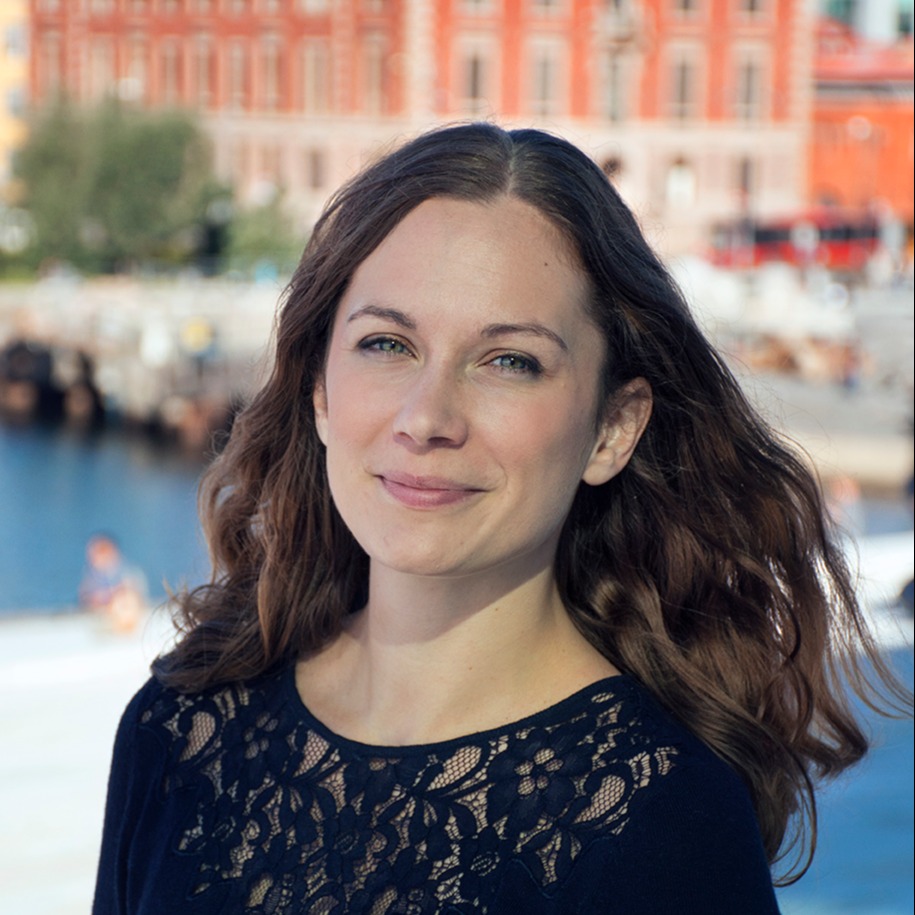Enterprise Architecture (EA) has always been more than it first seems.
Diversity in tech and EA has been proven time and time again to be good for business, yet of the 55,000 registered Enterprise Architecture Professionals, only 13% are women (2020). However, more women are considering going into the field, with one survey showing that the actual number of women interested is closer to 27%.
Diversity ensures that on a larger scale, strategic decisions are easier to come by and apply to a larger range of people. More diversity within EA departments can deliver more nuanced perspectives, leading to better strategic advice and improved results.
That’s why we invited five women, all experienced Enterprise Architects who excel in their field, to share their experiences. They shared thoughts on their industry, their own career paths, and how diversity can help shape EA’s future.
Our participants included:
- Gurpreet Bal, Head of Enterprise Architecture at Guardian Life and WIA Leadership Committee Member
- Eugenia Fey, Enterprise Architect at Slalom Detroit
- Klára Janovská, Enterprise Architect at Asahi
- Whynde Kuehn, Founder and Managing Director of S2E Transformation and WIA Leadership Committee Chair
- Geeta Pyne, Chief Enterprise Architect at Intuit and WIA Leadership Committee Member
The breadth of experiences these EAs bring to the table reflects the state of Enterprise Architecture today. Their insights on women in the field and their advice for those interested in becoming an Enterprise Architect both inspire and educate.
Making Data-Driven Decisions with Technical Savviness
Each architect we interviewed understands that many factors need consideration when looking at the ‘whys’ and ‘hows’ of EA. Additional factors could influence why and how things can change. It’s fair to say the issues in EA mirror those seen in the wider tech industry.
Women are the challengers in the EA field. For our interviewees, the industry needs to focus less on the details of architecture and more on enabling digital transformation and their organizations for greatness. It’s less about charting data and more about empowering the company to make informed decisions. Through our conversations, three themes quickly stood out above the rest.
These common themes were:
- The path to becoming an Enterprise Architect is not straight
- So-called “soft skills” are critical for communicating business value effectively
- Ensuring the future of EA looks bright
Let's dive deeper into these learnings.
All Roads Lead to Becoming an Enterprise Architect
Enterprise Architects need a diverse and vast skill set. Technical savviness only gets one so far in an EA career. Much like the majority of Enterprise Architects, our interviewees have diverse backgrounds. Still, they all point beyond an interest in data, programming, or EA frameworks and rather point towards strategic or “big picture” thinking.
Klára Janovská got into EA through collaboration with architects when she was working as a Data Governor. Her role at the time required responsibility for employee master data. Her team had good results with various data maintenance and data quality management projects, but there was a roadblock in their progress. She needed the EA team so that she could deliver the change needed under their guidance. The result was instant magic. “Something that business had been troubleshooting for a long time was immediately fixed.” She knew then that she wanted to be the resourceful, smart, no-fuss magician that she saw in their architects.
Senior Enterprise Architects can encourage and support those entering the field. The most important factors for inclusion are keeping resources open and providing opportunities for others to grow.
Eugenia Fey started her career as a programmer. She emphasized that having a variety of different experiences and understanding a variety of subjects in technology pays off. “You have to be fluent in the discussion. Keep yourself informed and educated in the industry. Never stop learning.”
Joining a community of EAs is one way to increase the visibility and capacity of women in EA. The non-profit organization Women in Architecture (WIA) was founded after seeing a need for a global initiative intending to accelerate the pathway for women in architecture. Their mission is to drive the expansion of women in architecture roles and enable women to thrive and contribute with impact. WIA achieves its mission through a vibrant community, events, coaching circles, education, pathway building, and partnerships. 
Communicate Business Value Effectively
To be successful, an EA must have a good understanding of business and the soft skills to communicate the importance of their work and strategic planning. Compassion, patience, and teamwork are often examples of soft skills. Teamwork is an integral part of any position. Even the most isolated employees have to work in teams to complete certain tasks and larger goals. Employers look for and value this rather large piece of the puzzle when hiring.
“Everything we do within an organization, both strategically and operationally, can and should be framed and driven by the business. Enterprise architecture is also a key enabler of end-to-end strategy to execution.” -Whynde Kuehn
We know that a diverse company is a successful company. Women make up 50% of the world’s population, yet only 20-25% of jobs in tech are filled by women. As mentioned earlier, in EA, it’s just 13%.
Everyone in an organization is responsible for diversity and inclusion in tech. At Ardoq, 37% of our employees are women. Although that is higher than the industry average, we want the industry average to rise to challenge us, not the other way around. Eugenia Fey encourages every architect to “be engaged, be involved, and justify decisions. Be able to listen. Diversity ensures we have different perspectives. That’s why it’s so important to listen.”
Ensuring the Future of Women in Enterprise Architecture Looks Bright
Globally, there has been increased visibility and openness about inclusion and diversity in business, including bringing more women and minorities into the tech industry. Forums and conversations around enablement are on the rise, with more women in leadership positions now than ever before. Men are simultaneously becoming stronger allies for others.
Eugenia Fey says it’s “no secret that IT used to be an overhead function. EAs were, for better or worse, considered part of IT and reported to the CFO. EAs have a role in leading the decision-making process. Overall the role of tech in our lives has grown so much. IT is now at the forefront.”
Overall, like the pace of the trends in technology, the demands of an EA evolve at the same fast pace. As Klára Janovská points out, the scale and variety of emerging technologies are putting pressure on EAs. The range of skills needed to be a well-rounded EA is expanding. “You need to be strong in fundamentals, problem solving, decision making, and tradeoffs. You need to understand how things connect and lastly communicate and collaborate,” says Geeta Pyne.
Geeta Pyne sees more forums and dialogues focusing on the need for more women. Women in leadership across the board, from corporate to startups, are becoming more common.
What EA Isn’t: Putting the Myths Around EA to Rest
Enterprise Architecture is full of myths, Whynde Kuehn says, including “that enterprise architecture is only about technology.” The idea that EA isn’t for women or non-technical people or that EA doesn’t connect to business strategy is just a couple of examples of the myths that circle Enterprise Architecture. The architects we spoke to want to put even more myths to rest:
For Klára Janovská, it’s “that Enterprise Architects are an IT or Solution Architect. This myth hurts our function the most [...] when HR teams do not understand the value proposition, and stakeholders of the function set up the team deep in the IT or Finance organization.”
Gupreet Bal wants to eliminate outdated operating frameworks that say Enterprise Architects are not required for projects. Then the work ends up being “done by multiple people under other titles, but with less than half the quality and with long-term side effects.”
As Geeta Pyne points out, EA isn’t just for large enterprises, nor should it be an ivory tower. “EA is about technology architecture,” she says.
These falsely collected beliefs serve no one, but what is the best way to move on from them and boost EA’s reputation? “Substitute the myth with something very useful for the community,” as Eugenia Fey put it. Don’t just wait for the myth to go away. Substitute it with something more positive that may help your team or your organization.
Encouraging the Next Generation of Enterprise Architects
Enterprise Architecture is evolving. According to Geeta Pyne, there is an “increasing focus on EA, Business Architecture, and business capability mapping to drive both efficiency and innovation.” The time is ripe to enter the Enterprise Architecture field.
What is their general advice for those wanting to enter the field or who think they may not qualify?
Gurpreet Bal recommends:
- Know that you are on a wonderful path
- Start understanding business strategy
- Understand your tech landscape
- Participate in discussions that will educate you and vice versa
Eugenia Fey added:
- Collect many different experiences
- Participate and contribute to a variety of different projects, initiatives, and programs
“Do not be afraid that EA requires you to be technical. You can always find the information [you need] to make the next step. It’s not impossible to learn, and experiences matter more.” -Eugenia Fey
Klára Janovská’s recommendations sum it up:
- Communicate. At all levels, frequently, with all stakeholders, with frequency
- Always stay relevant to the business and its goals
- Learn the pain points of stakeholders and show them how you can solve them
“There is a broader conversation and movement around gender equality that provides a new backdrop for the awareness and action around women in Enterprise Architecture. The passion and commitment by both women and men to make an impact in this space has increased and become energized” - Whynde Kuehn.
The next generation is now. We know that an equal world is an enabled world. And sometimes, we have to fight for it.
Want to learn more about how women are changing their organizations from the inside? Read about Nebraska Medicine's mission for innovative research and extraordinary patient care.
Please note that the views provided in this article are those of the individuals, not their organizations.
 Leah Plotz
With over ten years of experience working in content, Leah wants to make sure Ardoq empowers engagement and collaboration throughout an organization.
Leah Plotz
With over ten years of experience working in content, Leah wants to make sure Ardoq empowers engagement and collaboration throughout an organization.

/Logos/Ardoq/RGB_Ardoq_Logo_Stacked_White_Monochrome%201.png?width=80&height=77&name=RGB_Ardoq_Logo_Stacked_White_Monochrome%201.png)


